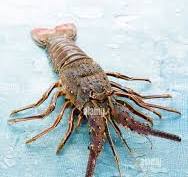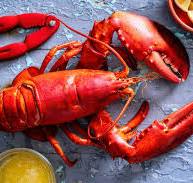Caribbean Lobster vs. Maine Lobster: A Detailed Comparison
Lobsters are a prized delicacy worldwide, but not all lobsters are created equal. The two most commonly compared varieties are the Caribbean lobster (also known as the spiny lobster) and the Maine lobster (also referred to as the American lobster). Though they share some similarities, these crustaceans are quite different in terms of appearance, habitat, taste, culinary uses, and sustainability. Understanding the distinctions between the two can help seafood lovers make informed choices when selecting the perfect lobster dish. While I have lived on St John, USVI for 10 + years now and thoroughly enjoy Caribbean lobster, Maine lobster will always get the nod with me! That being said, lobster is lobster, and I love it all!
Physical Differences
One of the most noticeable distinctions between Caribbean and Maine lobsters is their physical appearance. The Caribbean lobster (Panulirus argus) is a spiny lobster, characterized by its long, spiny antennae and the absence of large front claws. Instead of the prominent pincers seen on Maine lobsters, spiny lobsters rely on their antennae for defense. Their bodies have a distinctive, colorful pattern with a mix of brown, yellow, and orange hues that provide camouflage against coral and rocky surfaces.
On the other hand, the Maine lobster (Homarus americanus) is easily recognizable due to its large front claws, one being a crusher claw used for breaking shells and the other a pincher claw used for cutting. Their bodies are generally a darker greenish-brown color, which turns bright red when cooked. These physical differences not only affect the lobster’s behavior in the wild but also influence how they are prepared and eaten.

Caribbean spiny lobster
Habitat and Distribution
Caribbean lobsters are found in warm waters, primarily in the Caribbean Sea, the Gulf of Mexico, and parts of the western Atlantic Ocean. They thrive in coral reefs, seagrass beds, and rocky crevices where they can hide from predators. Spiny lobsters prefer tropical and subtropical waters and are commonly harvested in regions such as the Bahamas, Florida, and throughout the Caribbean islands.
Maine lobsters, in contrast, are cold-water crustaceans that inhabit the North Atlantic Ocean, particularly in the coastal waters of the northeastern United States and Canada. They are commonly found off the coasts of Maine, Nova Scotia, and New Brunswick. Maine lobsters tend to live in deeper, colder waters with rocky and sandy bottoms where they can burrow for protection. The cold water affects their growth rate, leading to a firmer texture and sweeter flavor compared to warm-water lobsters.
Taste and Texture
The differences in habitat and diet contribute to variations in taste and texture between Caribbean and Maine lobsters. Maine lobster meat is often described as sweeter, more tender, and succulent, with a delicate, buttery flavor. The tail, claws, and knuckles contain different textures, with the claws being especially soft and tender due to their lack of constant use.
Caribbean lobsters, on the other hand, have a firmer and slightly chewier texture. Since they lack large claws, most of the edible meat comes from the tail. Their meat has a mild, slightly briny flavor, making them a popular choice for grilled or broiled preparations. While some seafood enthusiasts prefer the rich, buttery taste of Maine lobster, others appreciate the firm, clean flavor of Caribbean lobster, particularly when prepared with bold seasonings and tropical ingredients.
Culinary Uses
Both types of lobsters are used in a variety of culinary applications, but their differences in texture and flavor often dictate their preferred preparation methods. Maine lobster is commonly boiled or steamed to preserve its natural sweetness. It is often served whole with melted butter or incorporated into dishes like lobster rolls, bisques, and pasta.
Caribbean lobster is frequently grilled, broiled, or pan-seared due to its firmer texture. It is a staple in Caribbean cuisine, often prepared with garlic butter, citrus marinades, or tropical spices. Caribbean lobster tails are especially popular in high-end seafood restaurants and beachside eateries, where they are served with coconut rice, plantains, or fresh salsa.
Availability and Price
The availability and cost of these lobsters vary significantly based on location and seasonality. Maine lobster is typically harvested year-round, with peak seasons occurring in the summer and early fall. The colder water slows their metabolism, resulting in high-quality meat that remains consistent throughout the year. Due to high demand, Maine lobster can be expensive, particularly when exported to regions outside North America.
Caribbean lobster is also available year-round but is more commonly harvested between August and March to prevent overfishing. In the Caribbean and Florida, spiny lobsters are often more affordable than Maine lobsters, though prices can fluctuate based on seasonal demand and location.
Sustainability and Fishing Practices
Sustainability is a crucial factor in the lobster industry, and both varieties have different conservation efforts in place. The Maine lobster fishery is one of the most well-regulated in the world, with strict guidelines on minimum and maximum size limits, egg-bearing female protection, and trap restrictions to prevent overfishing. These regulations have helped maintain healthy lobster populations in the North Atlantic, making Maine lobster a more sustainable choice for eco-conscious consumers.
Caribbean lobsters also have conservation measures in place, such as seasonal fishing bans, size limits, and restrictions on harvesting egg-bearing females. However, illegal poaching and unregulated fishing in some regions have raised concerns about the long-term sustainability of spiny lobster populations. Countries like the Bahamas and Belize have implemented marine protected areas and quota systems to help maintain a stable population, but challenges remain in ensuring compliance across all harvesting regions.
Which Lobster is Better?
Choosing between Caribbean and Maine lobster ultimately depends on personal preference and intended use. If you prefer a rich, buttery, and tender lobster experience, Maine lobster is the ideal choice. It is best suited for traditional lobster dishes like boiled lobster, lobster rolls, and creamy seafood pasta.
If you enjoy a firmer texture with a mild yet briny flavor, Caribbean lobster is an excellent option. It shines in grilled preparations and pairs well with tropical flavors. Its firm meat makes it ideal for marinating and high-heat cooking methods, making it a staple in Caribbean and Latin American cuisine.

Maine lobster
In conclusion, both Caribbean and Maine lobsters offer unique qualities that cater to different tastes and culinary styles. While Maine lobster is often favored for its tender, sweet meat and rich flavor, Caribbean lobster appeals to those who appreciate a firmer texture and bold seasonings. Understanding the distinctions between the two can enhance the dining experience and help seafood lovers choose the right lobster for their next meal. Whether enjoyed in a fine-dining restaurant or a beachside grill, both varieties deliver a delicious and memorable seafood experience. If you’re dining on St John, make sure not to miss lobster night at Morgan’s Mango restaurant on Tuesday’s and Saturday’s!
